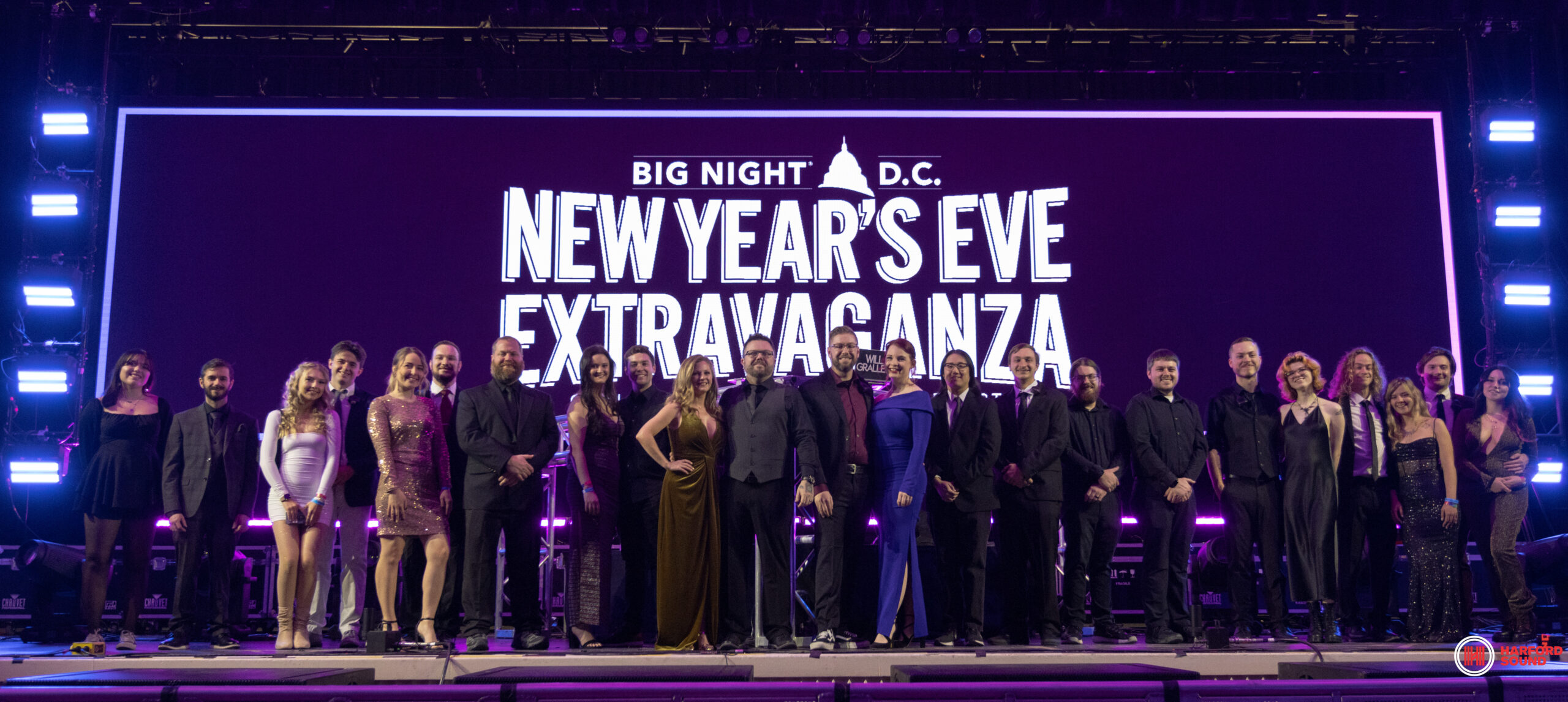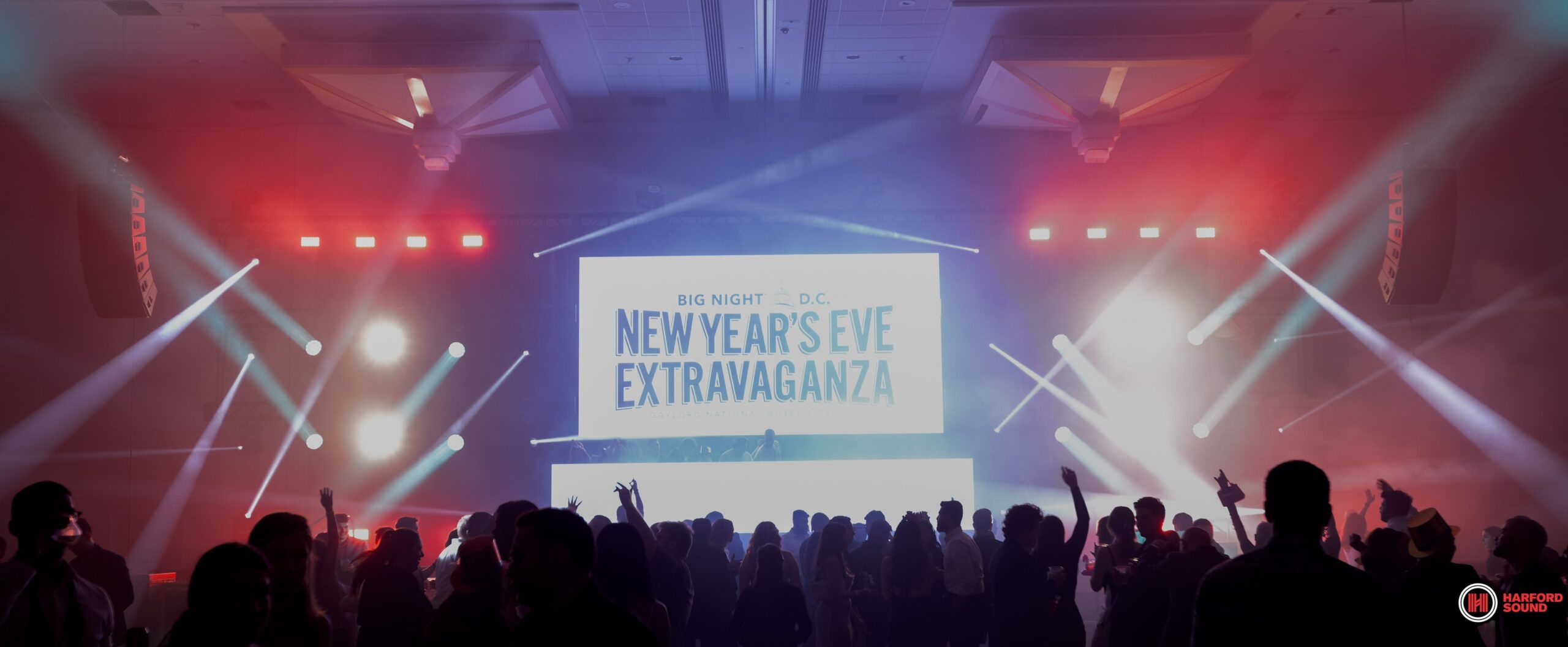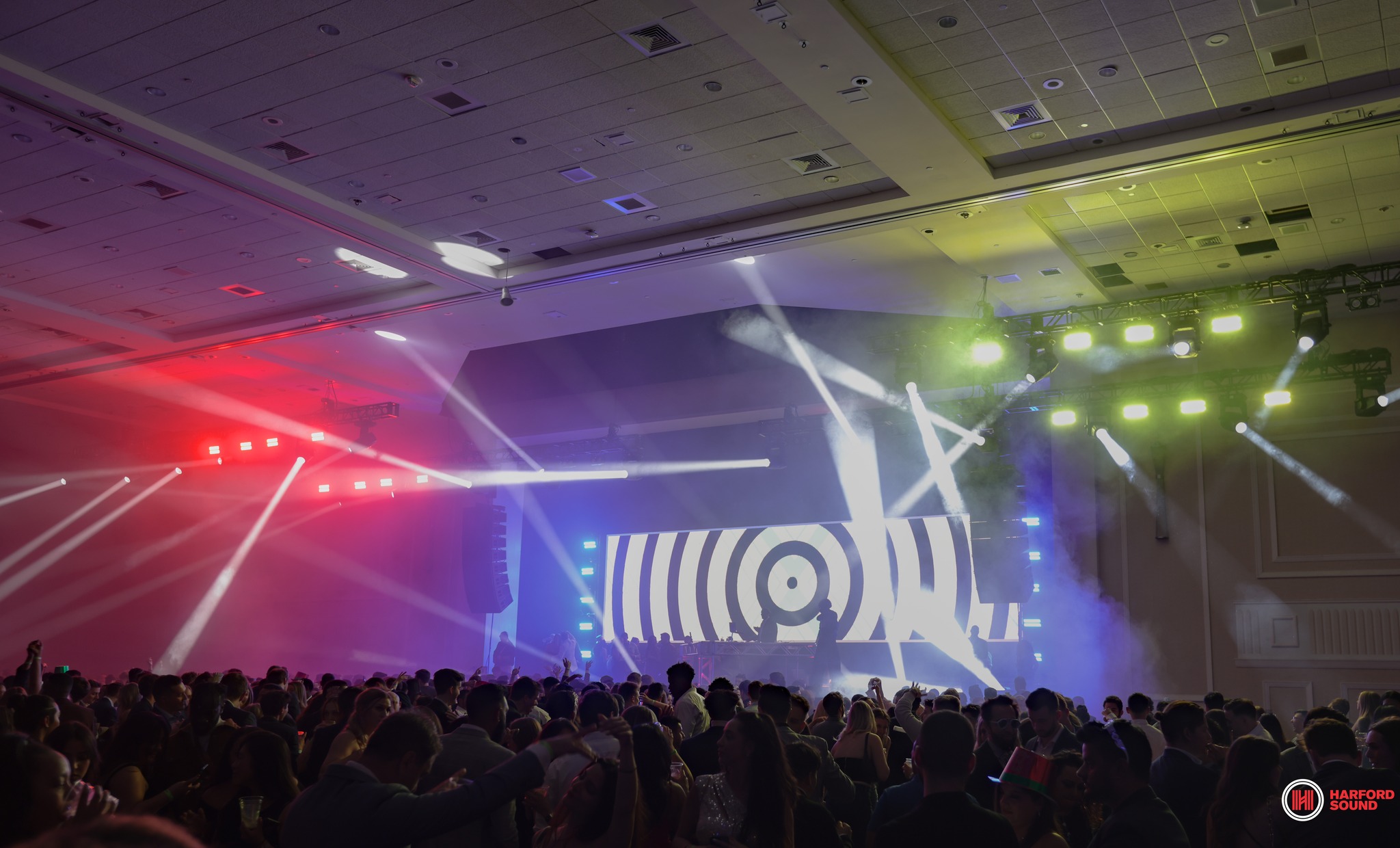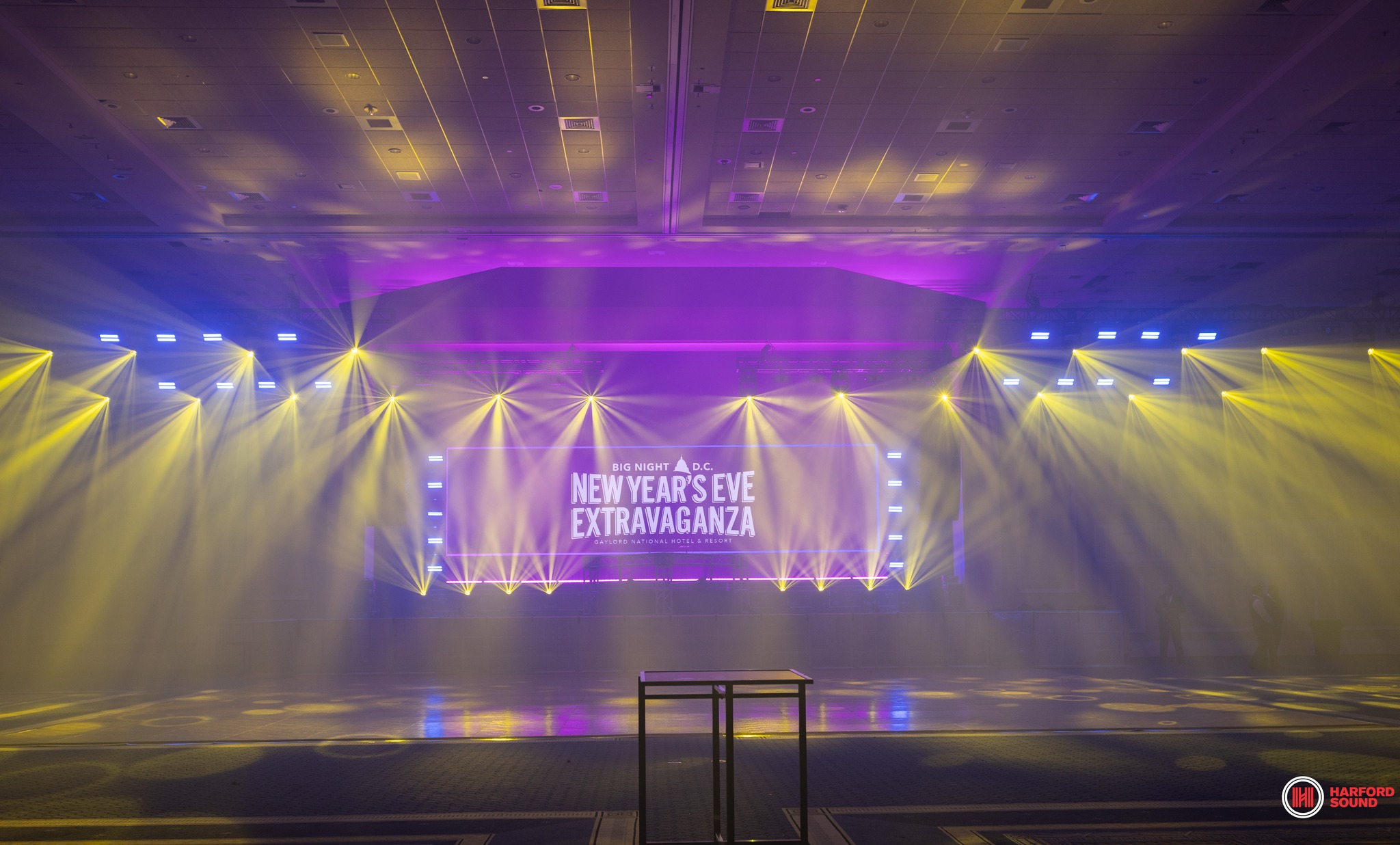Anatomy of a Rig – Evan Kirkendall and Big Nite DC
Posted on February 6, 2024
The Gaylord National Resort and Convention Center in National Harbor, MD, about 10 miles south of Washington DC is a perfect site for any event. The carefully manicured grounds are elegant, and guests can gaze out the main ballroom’s 270-degree floor-to-ceiling windows to enjoy stunning views of the Potomac River.
Small wonder then that the organizers of Big Nite DC chose this venue as the site of their popular NYE extravaganza. The 10,000 partyers who turned up at the center’s two ballrooms to welcome in 2024, weren’t disappointed. For six hours, they got to soak up a spectacular atmosphere, with dancing, open bars, great food options, and nonstop entertainment.
Contributing to the great atmosphere was a colorful, upbeat light and video show from Evan Kirkendall and his team at Harford Sound LLC., who also provided audio services for the celebration. Although the visual panorama that animated this fun-filled event flowed as smoothly as the nearby Potomac, making this spectacle happen in ballroom setting was no easy task, as everyone in this industry knows.
Kirkendall spoke to us about how he and his team met the challenges of turning a pair of big hotel ballrooms into party central for New Year’s Eve.

Hotel ballrooms don’t necessarily lend themselves to creating a concert-nightclub vibe. What were the big challenges you faced when creating dynamic looks for Big Nite DC?
“Aside from the usual issues of lighting entertainment in a ballroom, such as fixed ceiling height, and very limited rigging options, we had to contend with a stage that was small next to the size of the room. The stage’s proscenium opening is only 50-feet wide, while the room is 150-feet wide and 300-feet deep. We had some high-energy performers on the stage. So, a key goal of ours was to make it look as big as possible, while working within the limitations imposed by its relatively small size, and the ceiling height.”
How did you do this?
“Our idea was to put the largest video wall possible on stage this year. However, we also needed to make room for lights to create the kinds of shows we envisioned. So, we ended up building the widest possible video wall we could do, but kept it on the shorter side. Keeping the wall on the short side allowed us to frame it with lights, and then build ‘wings’ from the top to make it look more massive.”
How many fixtures and which types of fixtures did you use to accomplish this?
“We positioned five motorized strobe-washes on each side of the video wall. Then we ran 16 motorized battens below it and had clusters of two-pod blinders over it and extending out to both sides.
“Our in-house video head, Sam Choiniere, ran the entire video show. Sam ran everything through our media server with Resolume to create a very exciting show using a mix of in-house created content and stock content overlayed with the live camera feeds and logos. We also had an ArtNet merge the lighting console and video world so Sam could control the on-stage lighting fixtures for seamless colors between video and lighting.”

What about the lights that were not on stage?
“We had motorized strobe-washes, blinders and profiles located throughout the space . It was important that these fixtures gave us the output to standup to the video wall. Since the 28-foot-high ceiling was low by concert standards, we wanted fixtures with a high output even and the widest zoom ranges to we could fill the room.”
What kind of setup time did you have?
“It was a pretty ’tight’ timeline for the amount of work that needed to be done. Our trucks arrived at the docks at 9:30am, and the rigging call started at noon. It’s about an 800-foot push from the docks to the ballrooms, and we had four 53-foot trailers worth of gear to dump for this gig.
“We needed to have everything staged and ready to go onto truss by noon when the riggers arrived. Then it was a five-hour call to get the rig built, tested and at trim before we hit OT on the rigging call. That may seem like a lot of time, but we had 80-plus fixtures, and 70-plus video panels to hang by hand, cable, and test. And of course, this happened concurrently with all of the other rooms and structures being built. There’s a lot that goes into this gig! Thankfully we spread all of the non-rigging items out over two days, but it was definitely a non-stop load in.

“No way we could have done this without a great crew, which included our crew chief crew chief Steve Wozniak, Zach Slater, Jackson Craig, Holly Jorgensen, Jake Horanoff, Gabe Odachowski, Milo Matunis, Izzy Ladrillono, Oliver Nelson, Robby Gossweiler, Hayden Behr, Matt Vivlamore, and Zach Kreiner, as well as Sam Choiniere, who I mentioned earlier.
“Together, this team put in a solid week prepping and doing previz for the NYE event. Unlike in some projects, they actually got to run what they created at Big Nite DC. Oftentimes, we spend a bunch of 10-hour days building these cool rigs, run them a little in the daylight, and them watch somebody else create all these awesome looks in the dark. At this event our team actually gets to run the show they built. It was quite the rewarding experience”